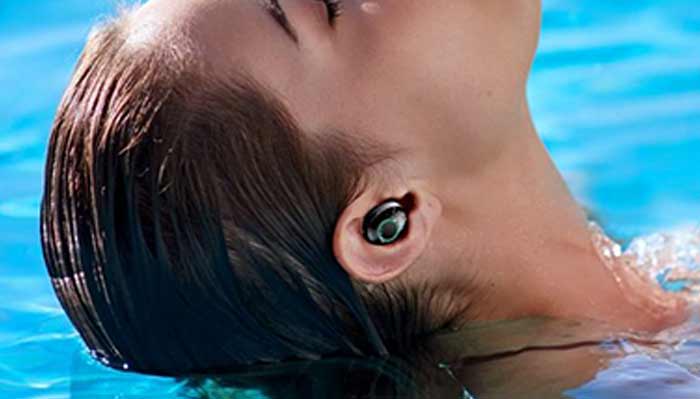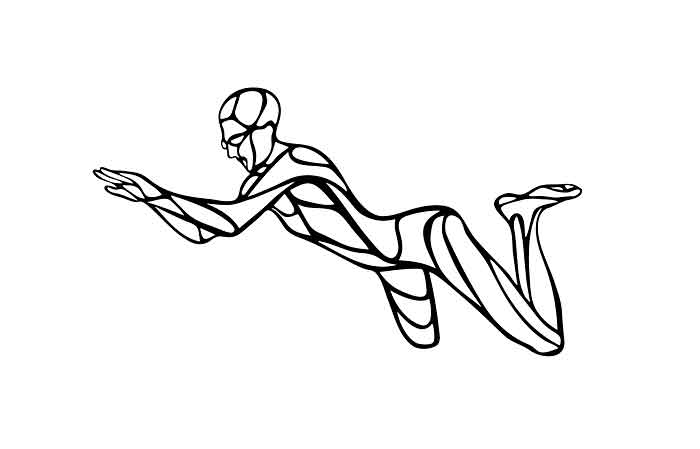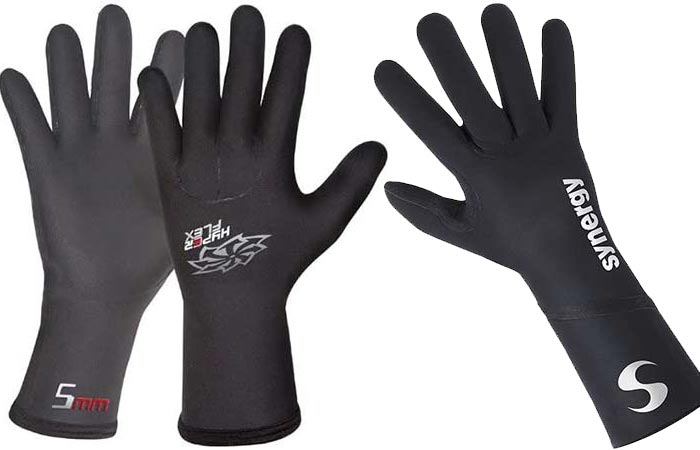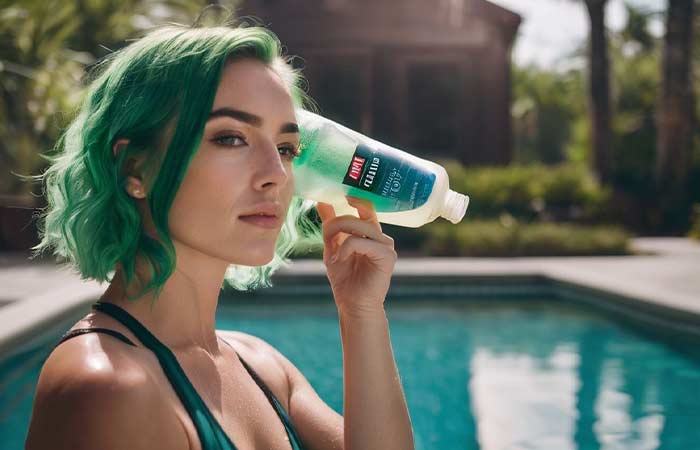Why do Swimmers Shave their Bodies, Legs, and Arms?
Trimming body hair before a big swimming competition is a time-honored tradition among competitive swimmers. But why do swimmers put themselves through the arduous process of removing all their body hair?
Backed by sports science and decades of anecdotal experience, swimmers shave their bodies to reduce drag allowing them to swim faster and more efficiently. It also helps them feel the water better, improving their technique.
Following is a complete guide on all you need to know about this practice including the performance and psychological benefits, shaving tips, origins, and frequently asked questions.
Why Swimmers Shave-The Science Behind it
Swimmers may intuitively sense that shaving improves their feel and speed in the water, but research has empirically quantified the performance benefits:
Reduction of Drag and Improved Hydrodynamics
Your body hair, especially on your legs and arms, creates extra friction as you move through the water. This drag forces you to expend more energy and effort just to maintain your speed. Studies show that removing body hair reduces drag so more of your power directly propels you forward.
In one study participants improved their distance per stroke by 5% after shaving. Their swim times improved on average by 1.5% compared to swimming with full body hair.
For longer races like the 1500m, reduced drag can cut several seconds off your time. Over shorter races, shaving may provide a more modest boost, but still makes a difference at the elite level

Lowering Blood Lactate Levels
Researchers found that shaved breaststroke swimmers had 23% lower blood lactate levels at peak speed versus unshaved. Lower lactate indicates an enhanced ability to resist fatigue. Therefore, shaving creates a smoother texture to optimize the body’s hydrodynamics.
Enhanced Feel for the Water
In addition to removing hair, shaving takes off the top layer of dead skin cells. This exposes a new layer of skin that feels ultra-smooth and sensitive. The heightened sensory feedback helps you better feel subtle changes and nuances in the water flowing over your body.
This renewed sensory connection with the water reinforces proper stroke technique. The smooth sensation also reinvigorates your motivation right before the competition.
Further Reading: Why Swimming is Awesome for Your Body and Mind
Benefits of Shaving for Competitive Swimmers
Beyond the science, what measurable performance and competition benefits can shaving provide?
Faster Times and Improved Speed
Every bit of reduced drag helps. Evidence from research shows that shaved swimmers improve power and distance per stroke by 5% each. For sprinters, hundreds of seconds matter, and shaving is an effective way to trim times.
Increased Efficiency and Reduced Exertion
By lessening drag, shaving enables a more streamlined and relaxed swim stroke. Less exertion, is required to maintain a given speed – an effort that can be directed toward power and efficiency.
Psychological Advantages
Shaving the body refreshes the mindset and confidence before the competition. Seeing smooth limbs reminds you of the work completed in training and signals your readiness to unleash peak fitness. Feeling renewed sensitivity in the water further elevates focus and motivation.
The full shave is often the final preparation step, so it inherently carries psychological power. Swimmers can use it to their advantage rather than just relying on the physiological effects.
Enhancing the Effectiveness of Massage and Physical Therapy
When swimmers shave their bodies, it helps massages and physical therapy work better. Removing hair makes it easier for therapists to reach the muscles and give a deeper massage. This helps release tension and improve blood flow.
Shaving also helps tape and bandages stick better during physical therapy sessions, providing more support. Overall, shaving helps the treatments be more effective in helping swimmers recover from muscle strain, prevent injuries, and perform their best in the water.
How to Shave for Swimming
Follow these best practices for optimal shaving technique and maximizing the performance boost:
What to Shave
At a minimum, shave your arms, legs, armpits, and any other skin that is likely to be exposed while swimming.
For maximal reduction of drag, also shave your chest, back, shoulders, and lower neck/upper back. Swimmers even shave their mid to upper back and lats if their strokes cause substantial body roll.
Some choose to shave hands and feet as well since these constantly make contact with the water. The more surface area you shave, the less friction you’ll encounter.
Shaving Equipment Needed
- Quality razors – Disposable 2-3 blade razors are ideal.
- Shaving cream – Mentholated cream enhances fresh sensation.
- Clippers – Trim the majority of hair before using a razor.
- Rubbing alcohol – Opens pores after shaving.
- Baby oil or moisturizer – Optional for avoiding skin dryness.
- Proper space– You need a comfortable place for the whole process of shaving
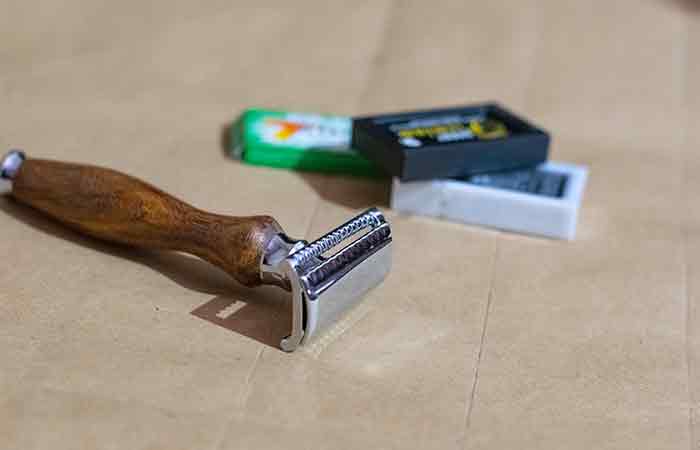
The Shaving Process Step-By-Step
- Shower to clean skin and soak stubble – Makes shaving easier.
- Use clippers to trim thick hair before shaving sensitive reduce razor clogs and irritation
- Apply shaving cream to the area being shaved.
- Use gentle but steady strokes with a razor.
- Carefully shave legs, arms, chest, and back.
- Lightly shave armpits if desired.
- Rinse off and apply alcohol/baby oil to comfort the skin.
- Be sure to take your time and use the proper techniques to avoid cuts.
Shaving Tips and Best Practices
Follow these tips for the smoothest, most effective shave:
- Exfoliate before shaving – Use a scrub to remove dead skin cells and facilitate close shaving.
- Shower first – Soften hairs and open pores to reduce irritation.
- Use a new sharp razor – This ensures a close shave in a few passes minimizing irritation.
- Shave with the grain – Go with the hair growth direction to lessen the chance of cuts.
- Keep skin taut – This lifts hairs up for an easier closer shave.
- Rinse blade frequently – Prevent razor from getting clogged reducing effectiveness.
- Moisturize after – Hydrate and soothe skin to avoid dryness and itching.
- Ask a teammate for help shaving hard-to-reach spots.
Proper preparation and technique help maximize shaving benefits while minimizing discomfort.
Things to Avoid When Shaving
While shaving should provide smooth sensations in the water, some pitfalls can ruin the experience:
- Don’t shave arms one day, legs the next. Shave all areas in one session for a uniform length.
- Avoid shaving over sunburned or irritated skin. This exacerbates inflammation.
- Don’t dry shave without sufficient lubricating gel or cream.
- Refrain from shaving over moles or blemishes that may bleed.
Just remember to stay patient in the process and take care to prevent nicks, razor burns, ingrown hairs, or other shaving mishaps.
Post-shave Skincare
Shaving removes a protective layer of dead skin cells and sebum. Here are some post-shave tips to keep your skin fresh and healthy.
- Apply a moisturizer or aftershave lotion to hydrate and soothe the skin
- Wear loose clothes – Tight clothes can aggravate freshly shaved sensitive skin.
- Use a daily SPF 30+ sunscreen on bare skin until dead cells regenerate after competition.
- Support healthy skin renewal by eating plenty of antioxidant and vitamin-rich fruits and vegetables.
With diligent skincare, swimmers can enjoy smooth, vibrant skin that outlasts race day.
Further Reading: Hair Care Swimmers- A Complete Guide.
Shaving Frequency Guideline
To maximize the novelty and boost, limit full body shaving to 1-2 times per competition season. Here are shaving frequency guidelines:
| Swimmer Level | Shaving Frequency |
| Age Group | 1-2 times per year for big meets |
| High School | Before state championships and season-end tapers |
| Collegiate | 3-5 times during season for major meets |
| Post-Grad/Pro | For select major competitions like Worlds/Olympics |
Younger swimmers should shave less often to preserve the newness feeling for when it matters most. As the competition level rises, shaving frequency can increase accordingly.
Gender Differences in Swim Shaving
Both male and female swimmers will shave before major competitions. But some nuances exist between the sexes when it comes to process and frequency:
Women generally have fewer areas to shave and can complete the process faster.
However, some women may be more prone to irritation, razor bumps, or ingrown hairs.
Men often shave their “swimmer’s beard” on the lower neck for full coverage.
Since women shave more routinely outside swimming, they derive less of a novelty effect before big meets.
But women may still realize enhanced sensation and race mentality from removing more hair than usual.
Overall, shaving provides performance and psychological benefits for all competitive swimmers, regardless of gender.
The training taper and shaving combine to unveil each individual’s peak potential on race day.
The History of Competitive Shaving
While competitive shaving is standard practice today, the origins stem from superstition.
The roots trace back to the 1950s when Jon Henricks of Australia shaved before winning at the 1955 national championships. The next year at the 1956 Melbourne Olympics, Murray Rose and other Aussie swimmers shaved and dominated the competition.
Their unprecedented success was falsely attributed to shaving their body hair. The myth quickly spread and by the 1960s, swimmers worldwide emulated the ritual.
Once research eventually confirmed the real hydrodynamic benefits, the tradition became firmly cemented. But empirical evidence wasn’t required for this fad to catch on thanks to early anecdotal success.
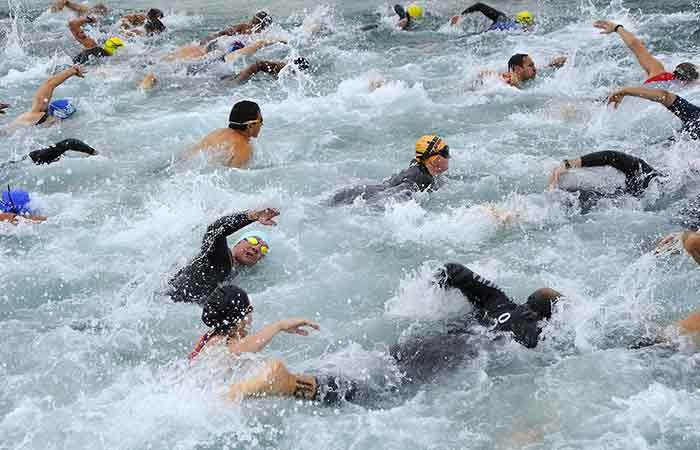
FAQs on Swimming and Shaving
Here are answers to some frequently asked questions about the art of swim shaving:
How Long does Smooth Skin Last after Shaving?
Freshly shaved skin remains ultra-smooth for about 1-2 days. After 3 days, stubble becomes noticeable again. Optimal glide lasts through a 2-3 day meet.
Do Swimmers Shave their Heads?
Most swimmers do not shave their entire heads, but some men will shave higher up the back of their neck or ears for the sake of full coverage.
Do Swimmers Shave their Eyebrows
It is optional some, especially women shave their eyebrows. But is not necessary as this small area provides minimal drag reduction benefit and can look strange, especially for men, when removed.
Do Swimmers Shave their Private Area?
It is a personal choice, but completely removing pubic hair is not necessary for performance gains – the legs, arms, and torso make the biggest hydrodynamic impact when shaved.
Why Not Wax Instead of Shaving?
Shaving removes dead skin cells while waxing does not. This skin sloughing enhances feel for the water that waxing misses.
When Should I Shave Before a Meet?
Start trimming hair 2 days out, then shave the night before or the morning of your first race day. Time it so the skin is smooth but not irritated.
How Long Does Shaving Take?
Plan 30-90 minutes for your first thorough shave down. You can become more efficient with practice.
In a Nutshell…
The practice of shaving by swimmers certainly reduces drag and enhances the sensory feel which in turn contributes to improved swimming times. Combining the physical and psychological boost of shaving with a solid taper makes it a time-tested championship preparation strategy.
Just be sure to use proper techniques and care before and after shaving to maximize results. With the right preparation, shaving can provide that little edge to grab a personal best or competitive win when it matters most.

